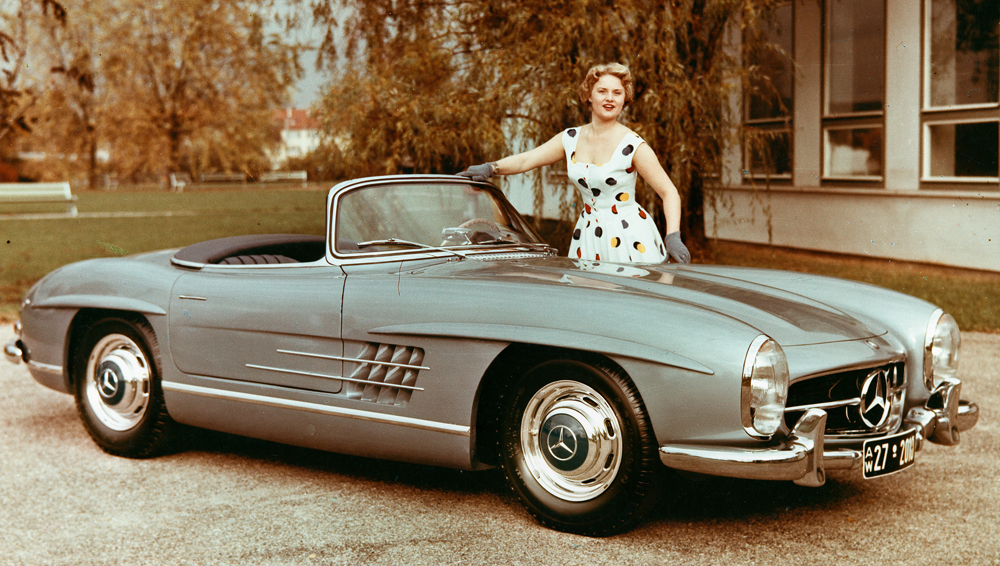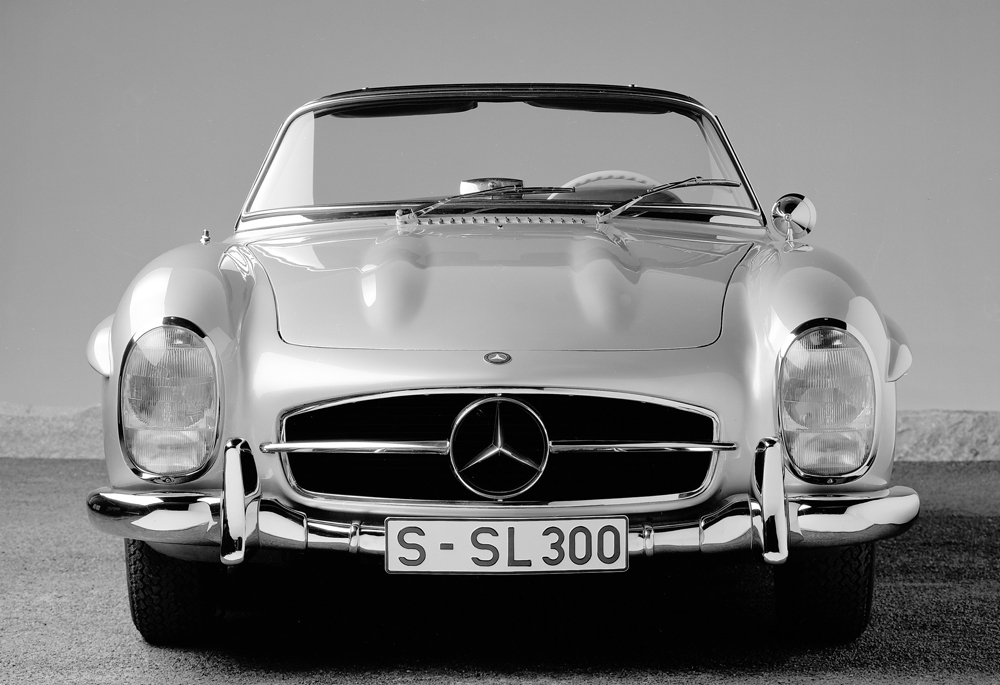
At the Geneva Motor Show in March 1957, Mercedes-Benz presented the roadster version of the 300 SL as the successor of the Gullwing coupé. From the start, Maximilian E. Hoffman had asked for this vehicle for the US market, since he saw greater chances for an open car there than for a coupé. Technically speaking, the Roadster was broadly similar to the coupé: modification to the side sections of the tubular space frame made it possible to reduce the sill height enough to accomodate normal doors.
A fundamental improvement: the rear-axle suspension. The single-joint low-pivot swing axle – familiar from the 220 W – was installed in the 300 SL Roadster in an adapted form, being equipped for the first time with a compensating spring. This greatly improved the handling characteristics over those of the original swing axle of the Gullwing coupé.
From 1958 onwards, an optional removable coupé roof with a generous wrap-around rear window was available at a price of 1500 Marks; this could be retrofitted. Noteworthy was the rear window, swinging round far into the sides, and the consummate design of the hard top. Two technical modifications that were incorporated into the production in the course of its six year run are particularly worthy of mention: in March 1961, the 300 SL was equipped with Dunlop front and rear disc brakes, and from March 1962 a modified engine with a light-metal block was installed.
At this time there was a special version of the 300 SL Roadster: the 300 SLS, only two units of which were ever built especially for participation in the North American Sports Car Championship. The reason for this special version was the wish for publicity-effective participation in races in the USA in order to promote sales of the Roadster. The use of the regular production version met with the objection of the Sports Car Club of America to permit participation of the new model already in the 1957 season in the “Standard production” vehicle category. In order to have a chance at least in the only alternative vehicle category remaining, D, the production Roadster was pared down ruthlessly to become the SLS.
On the outside the 300 SLS can be distinguished by the absence of bumpers, by its specially-shaped cockpit cover with air intake slot, the low racing winscreen and the roll-over bar behind the driver’s seat. The work carried out in the Daimler-Benz research department was successful and Paul O’Shea won the North American Sports Car Championship in category “D” far ahead of its competitors.
Production of the 300 SL ended concurrently with the end of production of the 190 SL on 8 February 1963 in Sindelfingen, a date that marks the close of an era: after the production of the 300 model ended in March 1962, only the 300 SL had remained as the last passenger car model with a separate frame in Mercedes-Benz’s production programme. Both versions of the 300 SL, Roadster and Gullwing coupé were right from the very beginning enthusiasts’ cars that have lost nothing of their allure to this day, for many years they have been among the most sought-after and valued classics.

Mercedes-Benz 300 SL Roadster, W 198 II series (1957-1963)
- Farewell to the Gullwing
- Hard top optional
- Improved suspension and engine
- Introduction of Dunlop disc brakes and light-metal engine block
- Rear-axle suspension with single-joint swing axle
- Optional removable coupé roof
Production figures
- Models………………………300 SL Roadster
- Internal designation……W 198 II
- Production period……….1957-1963 (pre-production to end)
- Number of units…………1,858 Roadsters and Roadsters with coupé roof



You must be logged in to post a comment.